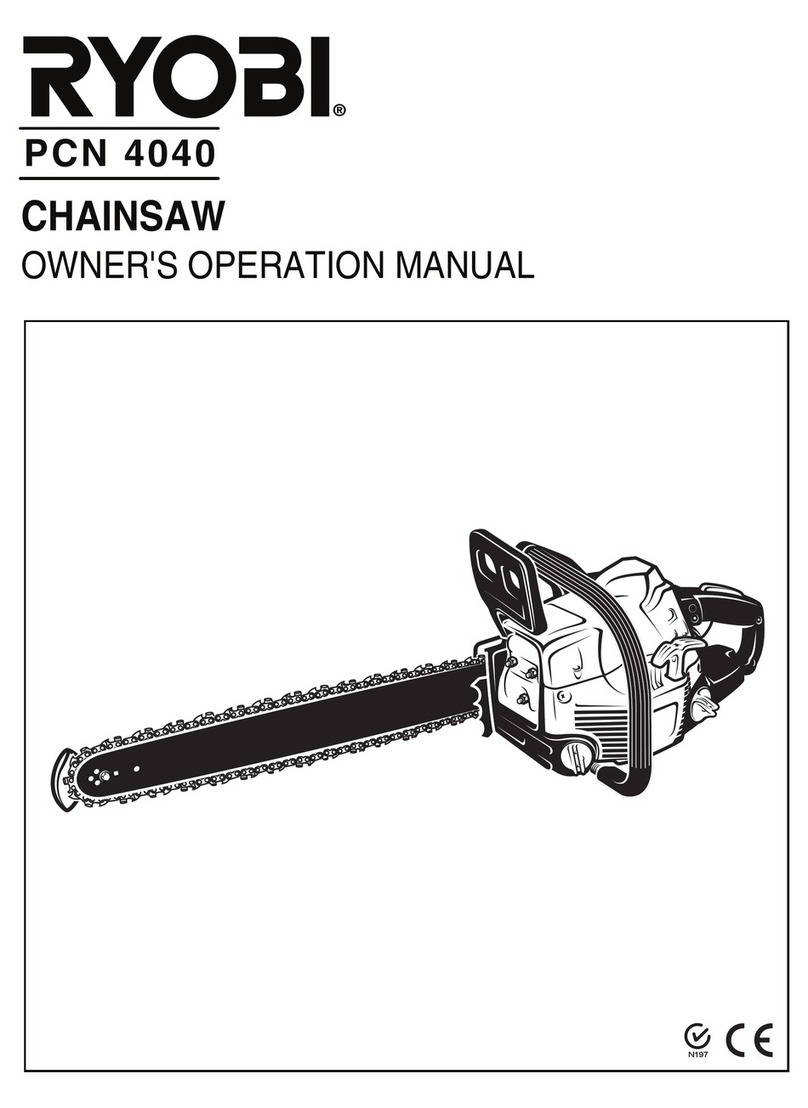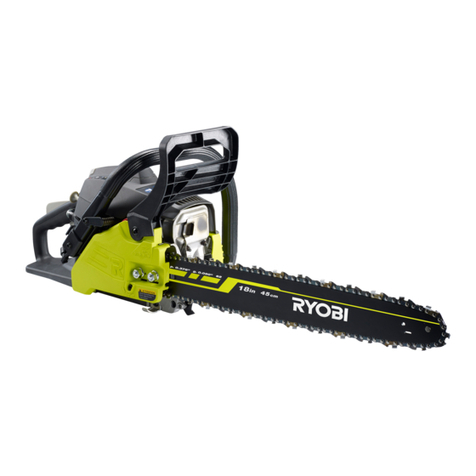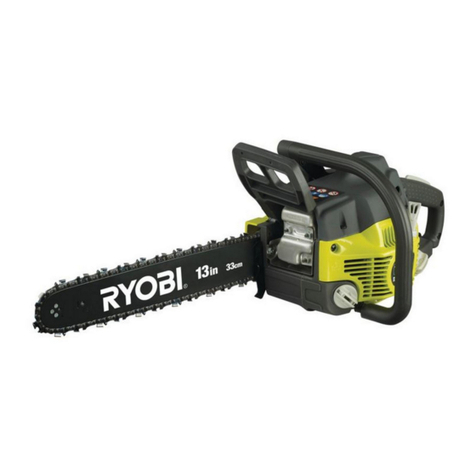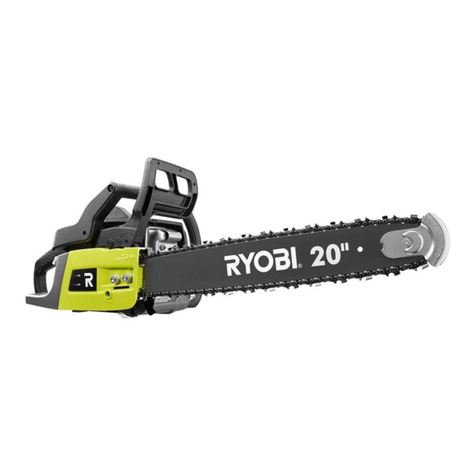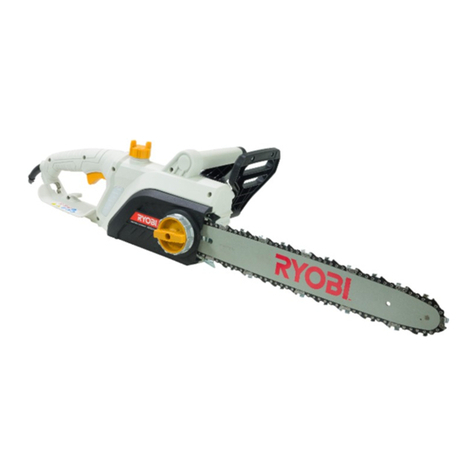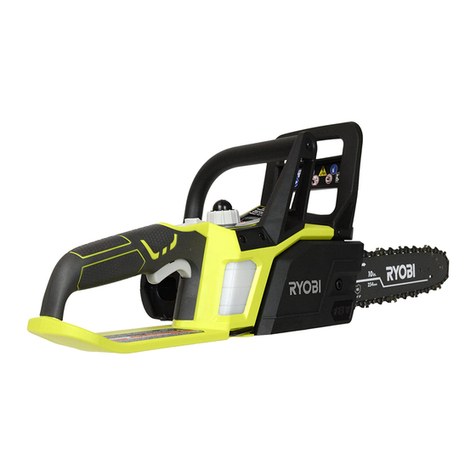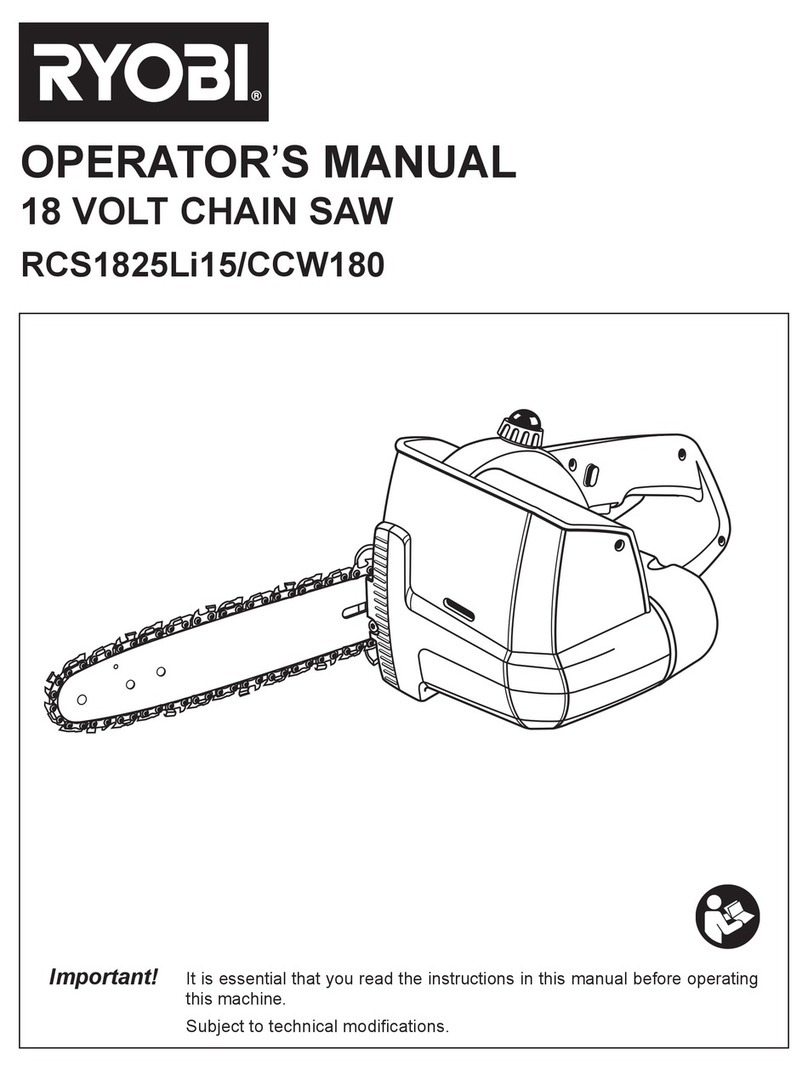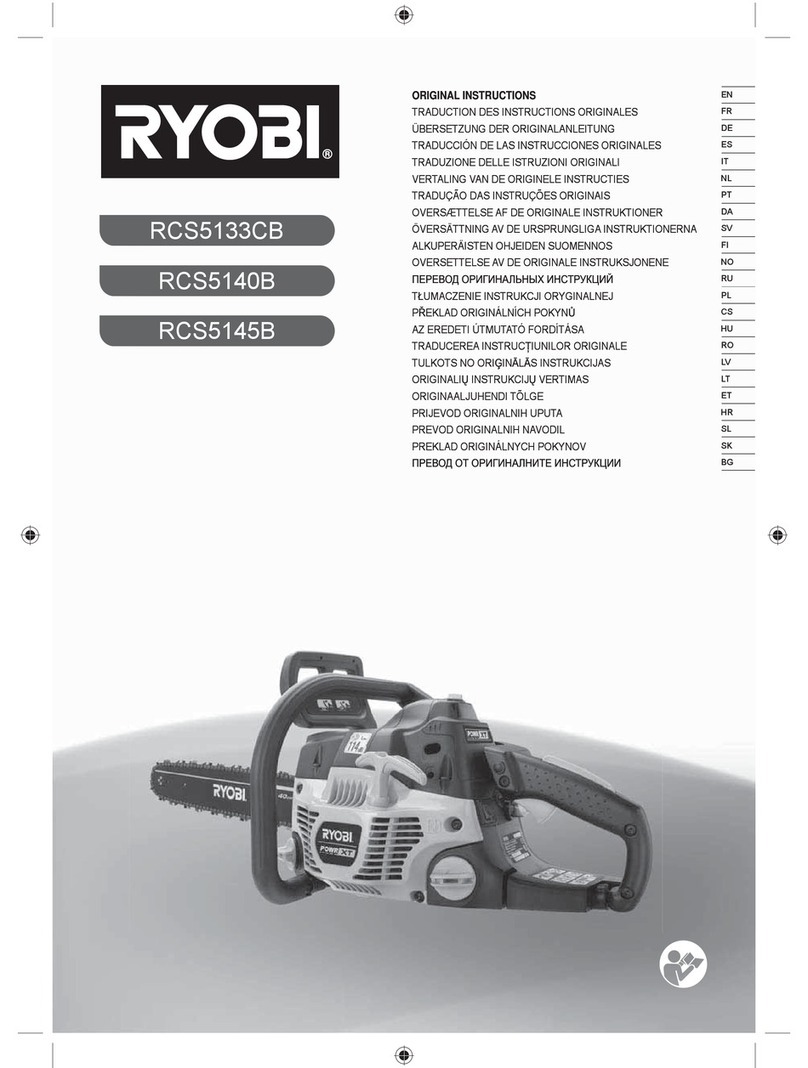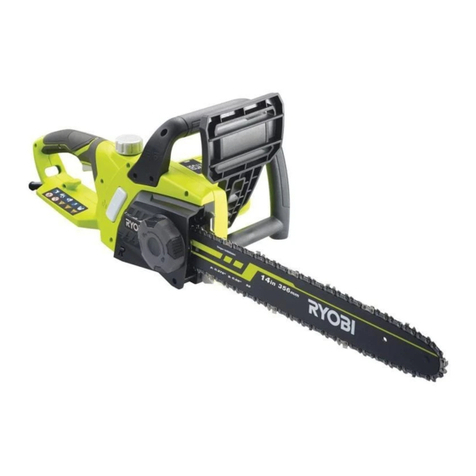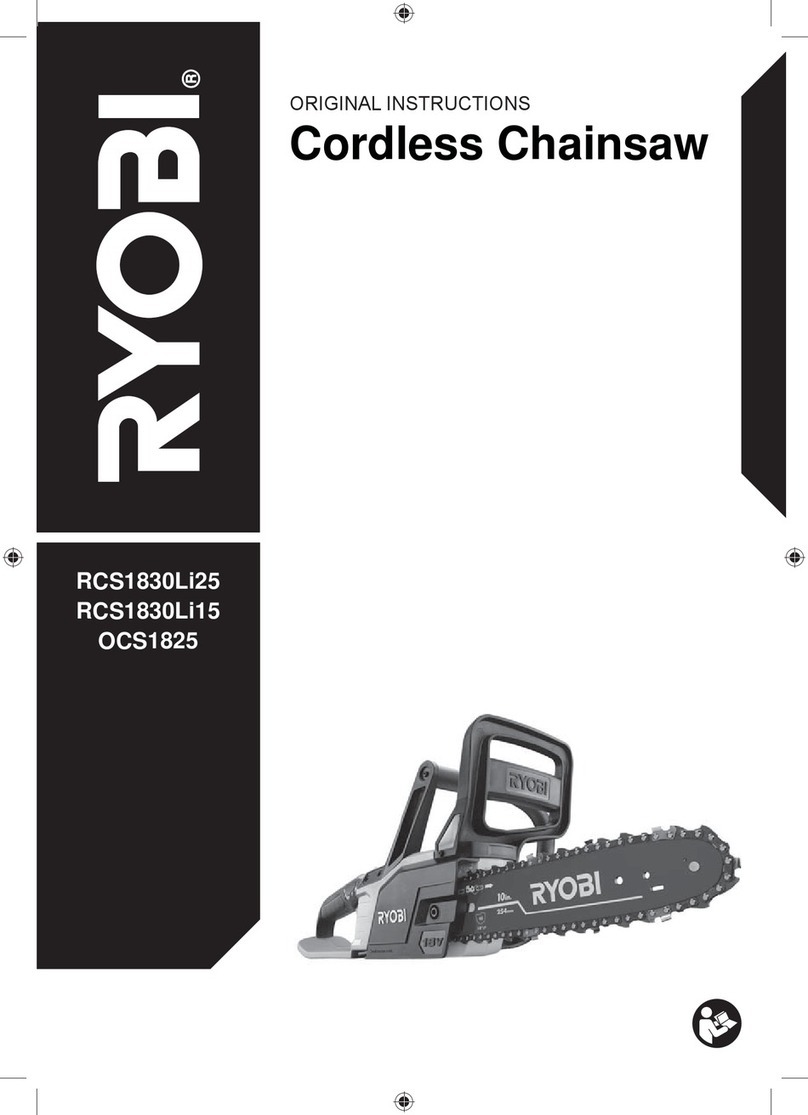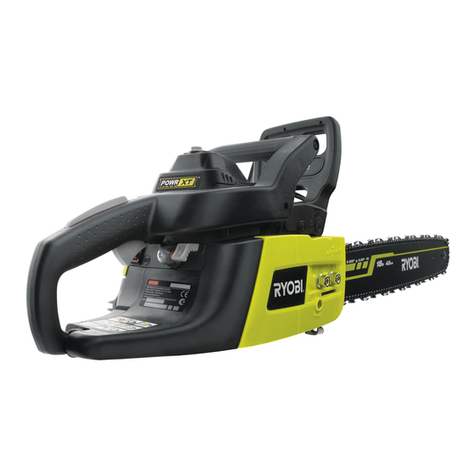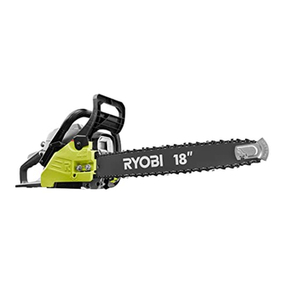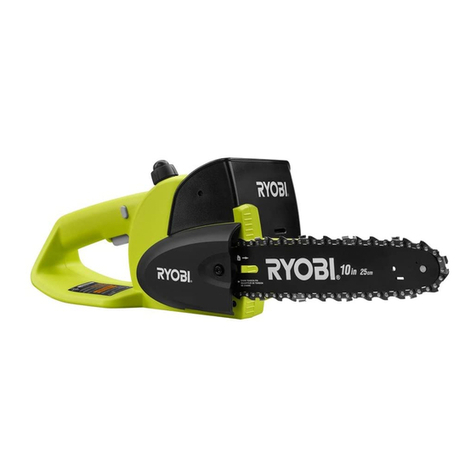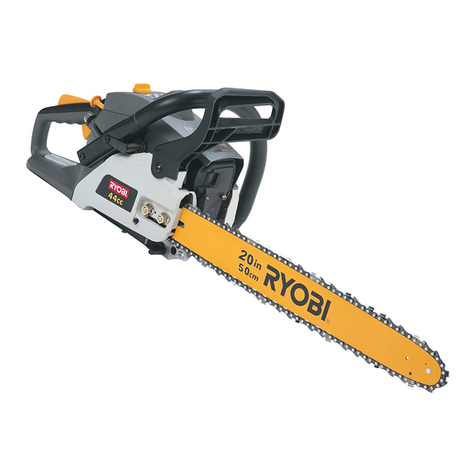
Page 6 — English
CHAIN SAW SAFETY WARNINGS
Do not overreach and do not cut above chest
height. This helps prevent unintended tip con-
tact and enables better control of the chain saw
in unexpected situations.
Only use replacement bars and chains speci-
fied by the manufacturer. Incorrect replace-
ment bars and chains may cause chain break-
age and/or kickback.
Follow the manufacturer’s sharpening and
maintenance instructions for the saw chain.
Decreasing the depth gauge height can lead to
increased kickback. Do not start cutting until
you have a clear work area, secure footing,
and a planned retreat path from the falling tree.
Cluttered areas invite accidents.
Keep ALL children, bystanders, visitors, and
animals out of the work area while starting or
cutting with the chain saw. Do not let visitors
contact chain saw or extension cord.
Do not operate chain saw in explosive atmo-
spheres, such as in the presence of flammable
liquids, gases, or dust. Chain saws create
sparks which may ignite the dust or fumes.
WARNING: Use outdoor extension cords
marked SW-A, SOW-A, STW-A, STOW-A, SJW-
A, SJTW-A, or SJTOW-A. These cords are rated
for outdoor use and reduce the risk of electric
shock.
Polarized Plugs. To reduce the risk of electric
shock, this tool has a polarized plug (one blade
is wider than the other). This plug will fit in a
polarized outlet only one way. If the plug does
not fit fully in the outlet, reverse the plug. If it
still does not fit, contact a qualified electrician
to install the proper outlet. Do not change the
plug in any way.
Make sure your extension cord is in good condi-
tion. When using an extension cord, be sure to
use one heavy enough to carry the current your
product will draw. A wire gauge size (A.W.G.) of
at least 14 is recommended for an extension
cord 50 feet or less in length. A cord exceeding
100 feet is not recommended. If in doubt, use
the next heavier gauge. The smaller the gauge
number, the heavier the cord. An undersized
cord will cause a drop in line voltage resulting
in loss of power and overheating.
Inspect extension cords periodically and, if dam-
aged, have repaired by a licensed electrician.
Constantly stay aware of cord location. Follow-
ing this rule will reduce the risk of electric shock
or fire.
Dress Properly — Wear snug fitting clothing.
Always wear heavy, long pants, long sleeves,
overalls, and jeans. We recommend the use of
chaps made of cut resistant material or ones
that contain cut resistant inserts that meet the
ASTM F1897 Standard Specification for Leg
Protection for Chain Saw Users. Wear non-
slip safety footwear. Wear non-slip heavy duty
gloves to improve your grip and to protect your
hands. Do not wear jewelry, short pants, san-
dals, or go barefoot. Do not wear loose fitting
clothing, which could be drawn into the motor
or catch the chain or underbrush. Secure hair
so it is above shoulder level. Wear hearing and
head protection.
Heavy protective clothing may increase operator
fatigue, which could lead to heat stroke. Dur-
ing weather that is hot and humid, heavy work
should be scheduled for early morning or late
afternoon hours when temperatures are cooler.
Always wear eye protection with side shields
marked to comply with ANSI Z87.1 as well as
hearing and head protection when operating
this equipment.
Always be aware of what you are doing when
using the chain saw. Use common sense. Do
not operate the chain saw when you are tired,
ill, or under the influence of alcohol, drugs, or
medication.
Do not expose the chain saw to rain.
Do not use the chain saw in damp or wet loca-
tions.
Always be aware of extension cord while oper-
ating chain saw. Take precautions to avoid
tripping over cord. Keep cord away from chain
and operator at all times. Never carry saw by
the cord or pull it to disconnect from receptacle.
Keep cord from oil and sharp edges.

